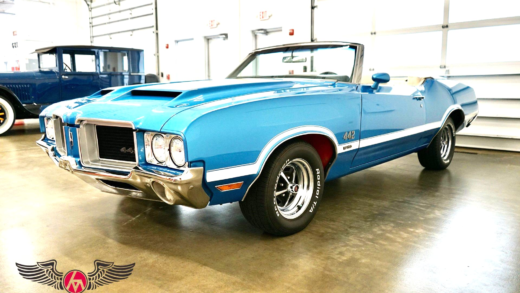Timing belts typically last between 60,000 to 100,000 miles, influenced by factors such as driving conditions and maintenance. Regular inspections and proper care can significantly extend their lifespan, while neglect can lead to severe engine damage. Replacement costs range from $500 to $1,000, depending on the vehicle. Driving with a damaged timing belt poses serious risks and can lead to costly repairs.
How Long Do Timing Belts Last?
Timing belt lifespan is crucial for vehicle maintenance. Typically, a timing belt lasts between 60,000 to 100,000 miles. However, this can vary based on several factors. Understanding these factors helps in planning maintenance and avoiding costly repairs.
Several elements influence how long timing belts last:
- Driving Conditions: Frequent stop-and-go traffic, extreme temperatures, and rough terrain can accelerate wear.
- Vehicle Type: Different makes and models have varying durability levels due to design and material.
- Maintenance: Regular checks and timely replacements can extend the belt’s lifespan significantly.
In summary, while timing belts have an average lifespan, paying attention to these factors can help you maximize their effectiveness and avoid unexpected breakdowns.
Factors Affecting Timing Belt Lifespan
Common issues can significantly shorten the lifespan of timing belts. These factors often go unnoticed until it’s too late.
- Heat Exposure: Excessive heat can degrade the rubber material, leading to cracks and premature failure.
- Oil Leaks: Oil contamination can weaken the timing belt, reducing its effectiveness.
- Improper Installation: If a timing belt is not installed correctly, it can lead to misalignment and premature wear.
- Neglecting Maintenance: Skipping scheduled inspections can result in missing signs of wear and tear.
These factors highlight the importance of regular maintenance and vigilance in keeping your timing belt in optimal condition.
Signs of a Failing Timing Belt
Spotting a failing timing belt early can save you from severe engine damage. Here are key indicators to watch for:
- Unusual Noises: A ticking or slapping noise from the engine can indicate a loose or damaged belt.
- Engine Misfiring: If the timing belt is worn, it can cause the engine to misfire or stall.
- Oil Leaks: Leaks around the timing belt cover may suggest wear or damage.
- Check Engine Light: This light may activate due to timing issues, prompting further investigation.
Being aware of these signs can help you take timely action, ensuring your vehicle remains reliable and safe.
Timing Belt Replacement Frequency
Understanding timing belt replacement frequency is vital for maintaining your vehicle’s health. Typically, it’s advisable to get your timing belt checked every 60,000 to 100,000 miles, depending on the manufacturer’s recommendations. Regular inspections can catch wear and tear before they become significant issues.
Here are some key points to consider regarding replacement:
- Manufacturer Guidelines: Always refer to your vehicle’s manual for specific replacement intervals.
- Driving Conditions: If you often drive in severe conditions, such as heavy traffic or extreme temperatures, consider more frequent checks.
- Signs of Wear: If you notice unusual noises or performance issues, get your timing belt evaluated sooner.
Keeping up with these recommendations can prevent unexpected breakdowns and costly repairs.
What Happens If a Timing Belt Breaks?
The consequences of timing belt failure can be severe. If a timing belt breaks while driving, it can lead to catastrophic engine damage. The engine relies on the timing belt to synchronize its components, and when it fails, the pistons and valves can collide.
Here are some potential outcomes:
- Engine Damage: A broken timing belt can cause bent valves, damaged pistons, and even a total engine failure.
- Costly Repairs: Repairing the damage from a timing belt failure can be expensive, often ranging from hundreds to thousands of dollars.
- Safety Risks: A sudden failure while driving can lead to loss of control and potential accidents.
To avoid these dire situations, regular inspections and timely replacements are essential.
Types of Timing Belts and Their Durability
Different types of timing belts exist, each with varying lifespans and durability. The most common types include rubber timing belts, composite belts, and metal timing belts.
Here’s a breakdown of their characteristics:
- Rubber Timing Belts: These are the most common and typically last between 60,000 to 100,000 miles. They are cost-effective but sensitive to heat and oil.
- Composite Timing Belts: Made from a combination of materials, these belts offer better durability and can last longer under harsh conditions.
- Metal Timing Belts: These are less common but provide superior strength and longevity, suitable for high-performance engines.
Choosing the right type of timing belt for your vehicle can impact its lifespan and performance. Always consider your vehicle’s requirements and driving conditions when selecting a timing belt.
Timing Belt Maintenance Impact
Regular timing belt maintenance plays a crucial role in extending its lifespan. Proper care ensures that your timing belt remains in good condition, thus avoiding costly replacements and engine damage. Here are essential maintenance practices:
- Regular Inspections: Schedule periodic checks to identify wear and tear early. Look for cracks or signs of fraying.
- Replace Timing Belt as Recommended: Follow the manufacturer’s guidelines regarding replacement intervals. Ignoring these can lead to premature failure.
- Keep Engine Clean: A clean engine reduces the risk of oil leaks, which can weaken the timing belt.
- Check Tension: Ensure the timing belt has the correct tension. A loose belt can slip, while a tight one can lead to premature wear.
Implementing these practices can significantly impact the longevity of your timing belt, ensuring your vehicle runs smoothly for years.
Average Cost of Timing Belt Replacement
Understanding the average cost of timing belt replacement is essential for budgeting. Typically, the cost ranges from $500 to $1,000, depending on various factors:
- Vehicle Make and Model: Luxury or high-performance vehicles often incur higher replacement costs due to specialized parts.
- Labor Costs: Mechanic fees can vary significantly based on location and shop rates. It’s wise to compare quotes from different service providers.
- Additional Repairs: Sometimes, replacing the timing belt might require other repairs, such as water pump replacement, which can increase the overall cost.
Budgeting for this maintenance will help avoid unexpected financial burdens while keeping your vehicle in top shape.
Can You Drive With a Damaged Timing Belt?
Driving with a damaged timing belt is highly risky. A compromised belt can lead to severe engine problems. Here are some key points to consider:
- Immediate Risks: If the timing belt breaks while driving, it can cause significant engine damage, potentially leading to costly repairs.
- Loss of Control: A sudden failure can result in loss of power, making it difficult to control the vehicle.
- Cost Implications: Repairing damage caused by a broken timing belt can cost thousands, far exceeding the price of regular maintenance.
To ensure safety and prevent extensive damage, avoid driving with a damaged timing belt and seek immediate inspection from a qualified mechanic.





Comments are closed.